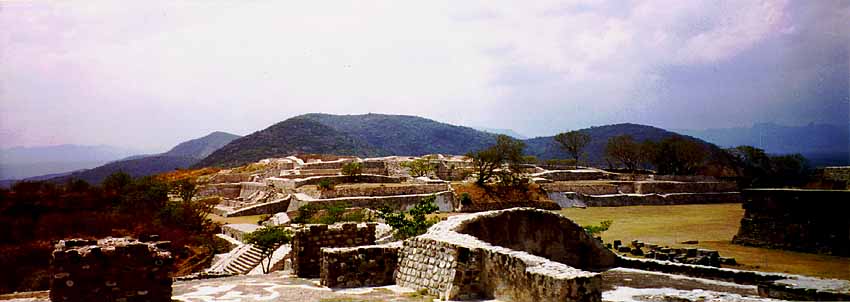 |
The site of Xochicalco is located on a hilltop
in Morelos, with defensive walls and terracing along most of the hillside.
This site, like Cacaxtla,
shows the tell-tale signs of warfare and widespread culture contact after
the fall of Teotihuacan.
This first picture is from the top of the site, showing the elite residences
that were located within the most defensible portion of the city. |
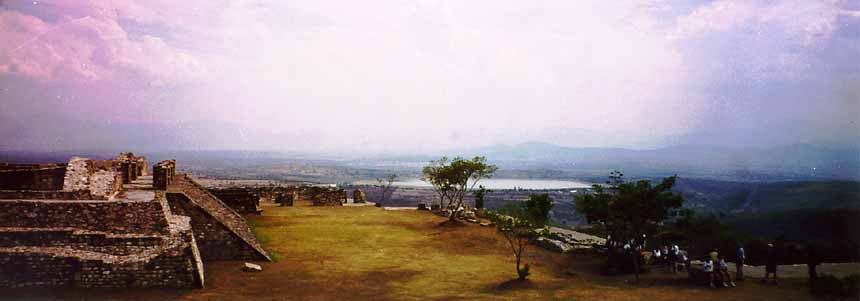 |
Off in the distance, one can see the lake
which once supplied Xochicalco with its potable water. Even though the
lake edge may have been closer in antiquity, it still would have been quite
a long distance to haul water, and may indicate the lengths to which cities
had to go in order to insure safety during the Epiclassic period. |
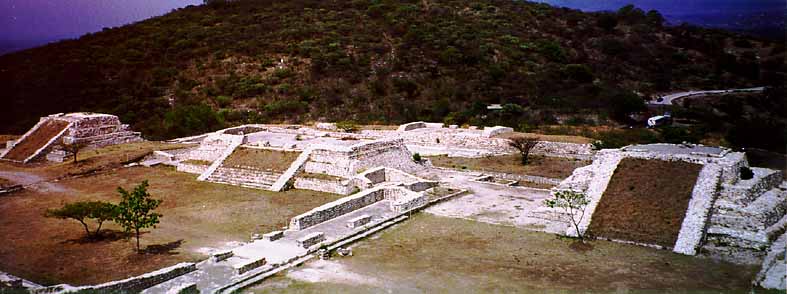 |
The architecture at Xochicalco is not particularly stunning, with
few extant carvings or adornments on the structures themselves. But the
pure number of temples and other structures is quite astounding for the
small site that it is. Here one can see a triad
of temples built facing the center of the hilltop site. |
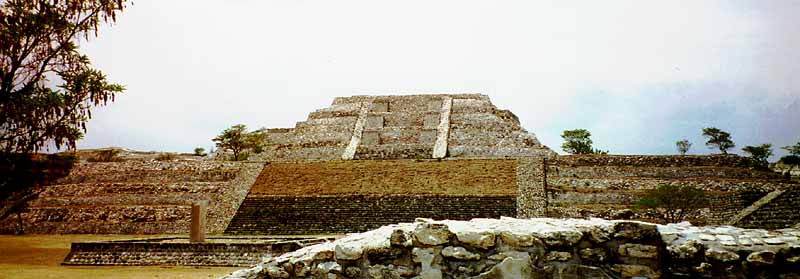 |
Here you can see one of the larger temples at the site, called the
Grand Pyramid, built using the natural slope
of the land to add to its height and volume. In front is a small stela with
carvings on it. Another view, facing away from this temple, is also available
within this link. |
 |
Along one of the terraces, archaeologists uncovered a room with a
polychrome painted altar / bench. The colors are
very faint now, and I am told that they have faded considerably in just
the past few years. The only design discernible today is the beautiful blue
tone used to outline the tablero, and the same blue which trickles down
in wavy lines on the talud of the altar. |
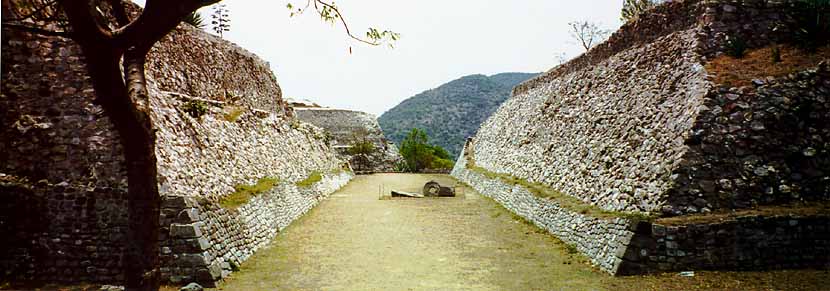 |
Xochicalco is notable for its fairly large ballcourts. Photos of two of
them can be viewed through this link. The first one (shown in the thumbnail
on the left) is called the North Ballcourt.
The other is the South Ballcourt. Both show
a capital "I" formation and sunken court. Carved ballcourt markers
have been found. One of these markers is currently located in the site museum
(see below), others rest on the surface of the ballcourt where excavators
uncovered them. |
 |
Since Xochicalco was built using the natural slope of the hillside,
many underground tunnels were constructed as well.
Here you can see three openings into these man-made tunnels. The opening
on the left brings you to a chamber called "the observatory",
where a tunnel of light only shines directly down during certain times of
the year. Archaeologists therefore believe that this was used as a type
of solar calendar. |
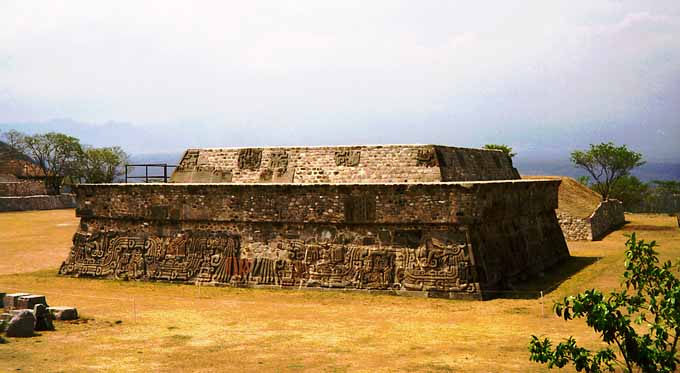 |
This is the one structure from Xochicalco that is on every postcard for
the site. It not only has one of the few carved façades at the site,
it is also very important in determining cultural interactions during the
Epiclassic period, after the fall of Teotihuacan. This period was a time
of eclecticism, when cultures were very visibly interacting with each other,
and there were possible migrations of a great many people. The evidence
for this at Xochicalco is very similar to that at Cacaxtla. The designs
on this otherwise Central Mexican structure, called the Pyramid
of the Feathered Serpent, include figures that are distinctively Maya. |
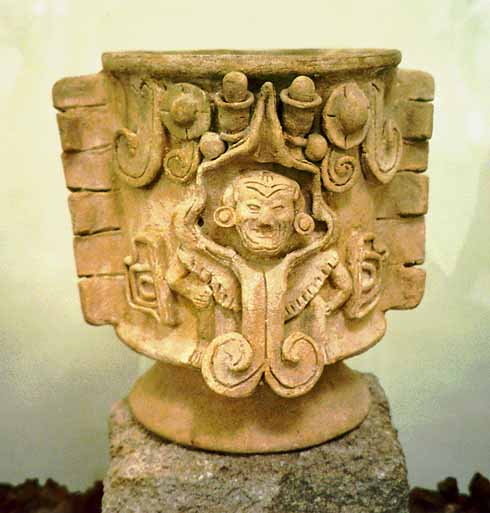 |
The museum at Xochicalco is absolutely
fantastic. While the site itself may seem to be a just a lot of architecture,
the museum shows you what the site must have been like during the height
of its power. Red pigments still cling to a great many of the exquisite
artifacts. Intricate vessels, carved ballcourt markers, and miniature models
of pyramids are just some of the truly interesting artifacts housed at the
museum. Click on this link to see a handful of the items on display. |
| |
|










